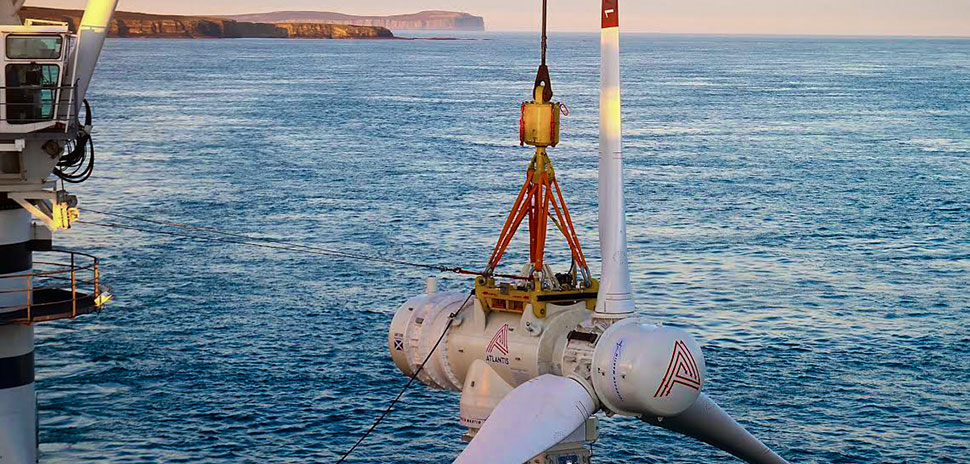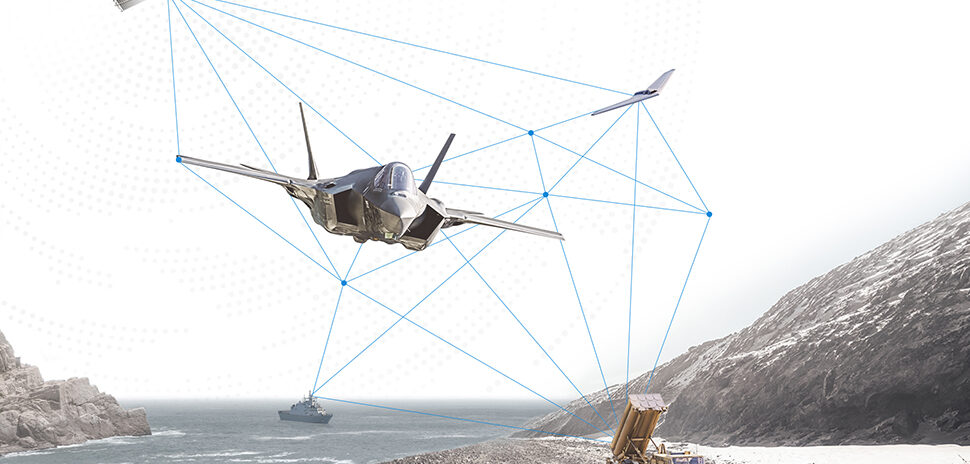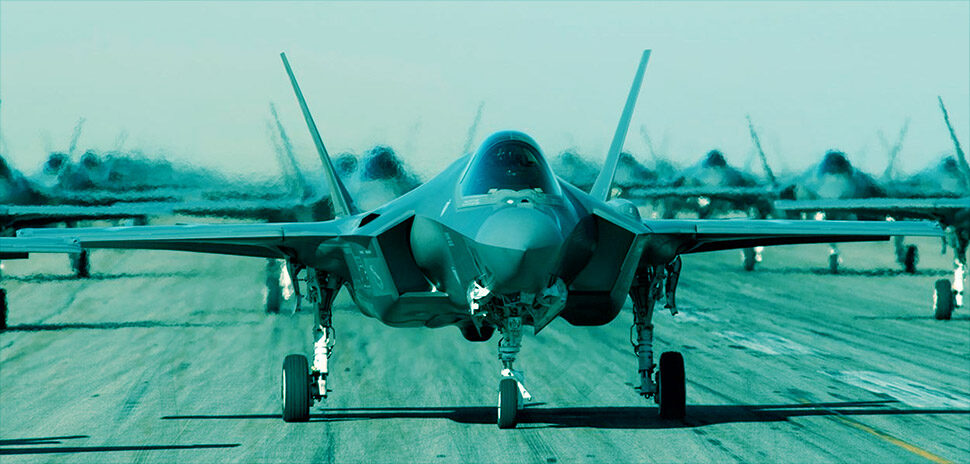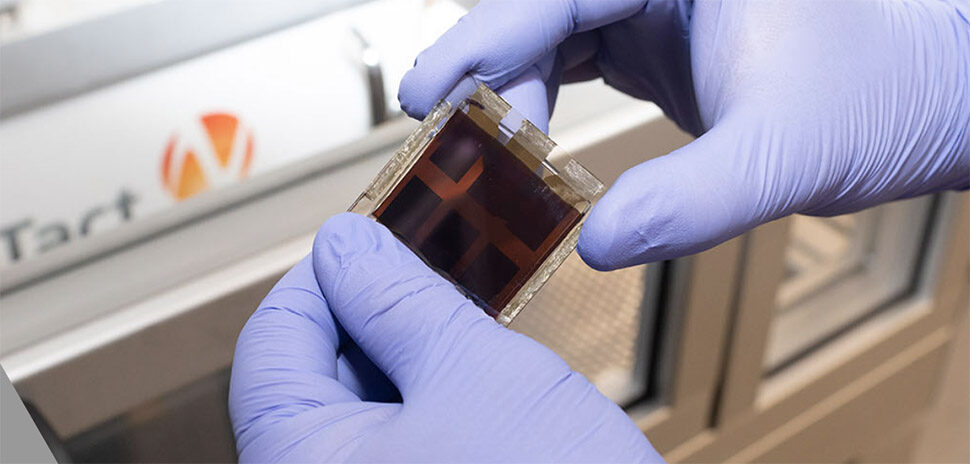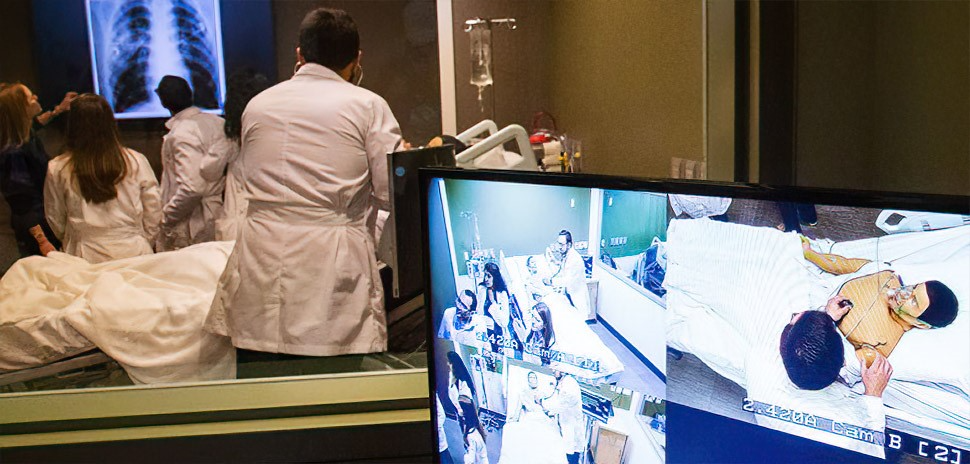Researchers at Lockheed Martin’s Grand Prairie facility are tapping into a new energy source that’s half a world away off the coast of Scotland.

Tony Pelligrino
They have developed a tidal energy turbine that generates electricity from the rapid flow of water in a narrow channel. It’s basically an underwater wind turbine that moves with the water flow. Potentially, it’s a consistent source of renewable energy that could provide baseload power on a massive scale.
“There’s a lot of energy in the tidal flows around the world,” said Tony Pellegrino, a research engineer and senior manager for Lockheed. “There’s certain areas around the planet that have strong tidal forces. Unlike wind, which can be frequent but still unpredictable, as long as there’s a moon that orbits our planet, we’ll have those same tidal flows.
“There’s a lot of energy in the tidal flows around the world.”
Tony Pellegrino
This project is led by Lockheed Martin Energy, a subsidiary of Lockheed that focuses on energy efficiency, energy storage, nuclear systems, tidal energy, and bioenergy.
The first AR1500 unit was deployed in February off the coast of John O’Groats at the northern tip of Scotland. Lockheed designed the 1.5 megawatt turbine and developed the yaw drive and variable pitch systems that allow the turbine to rotate and angle up and down so it’s always facing into the tidal flow.
WHAT MAKES IT DIFFERENT?
Other companies are developing similar tidal energy turbines, but Pellegrino said Lockheed Martin took on the engineering challenge of building one that’s more compact and can be lowered into place in less than an hour. The 150 ton turbine has to be lowered into place precisely while fighting a strong current.
The larger design used by a competitor is bulky, takes longer to install, and heightens the risk that it could tip over or fall while being installed, Pellegrino said.
“We feel like ours is a lot more eloquently designed, lighter weight, and has more power than what other turbines are doing.” Pellegrino said.
“We feel like ours is a lot more eloquently designed, lighter weight, and has more power than what other turbines are doing,” Tony Pellegrino
The turbine also has to be leak proof, able to withstand enormous pressure, and be relatively maintenance free so it doesn’t have to be raised to the surface often.
“Tidal turbines must be highly reliable and resilient to withstand and operate within the tough environment of a sea floor,” said Frank Armijo, vice president of Lockheed Martin Energy. “These design requirements are similar to the reliability and durability needs of many of our aerospace programs.”
TIDAL ENERGY ON A MASSIVE SCALE
Lockheed and its partner, Atlantis Resources Limited plan to deploy another 270 turbines, capable of producing up to 400 megawatts of energy.
Their work is part of the larger MeyGen Project, which, according to Lockheed’s website, is the “world’s largest tidal stream project under development.”
Tidal energy has advantages over traditional land-based wind energy in that it’s more consistent and sits on the ocean floor, creating less of an eyesore. Lockheed is not involved in the offshore wind industry, where turbines capture wind on the ocean surface.
With underwater tidal energy, ships can still traverse the water without hitting the turbines. There are fishing lane restrictions so the nets don’t catch on them. If a fishing net does get caught on the turbine, the blades are designed to cut the line.
Lockheed also is exploring tidal energy potential in the Bay of Fundy near the Maine/Canada border. The area records some of the highest tidal flows in the world, Pellegrino said.
Another potential spot could be off the Florida coast where it could tap into the Gulf Stream. This will present more technical challenges for Lockheed because it has to find a sweet spot for the turbines that’s high enough to catch the current but low enough that ships can go over it.
But, that’s nothing new for Lockheed, which Pellegrino said is working on some of the largest and most complex systems on Earth.
Dallas Innovates, every day
One quick signup, and you’ll be on the list.
View previous emails.










